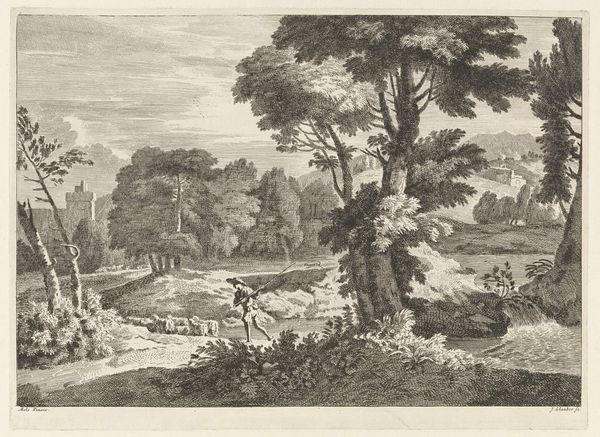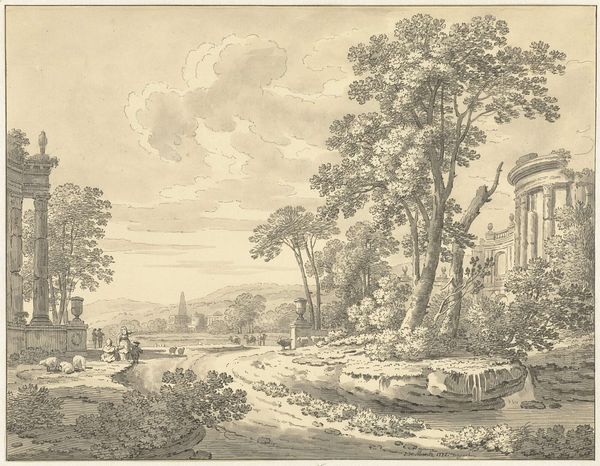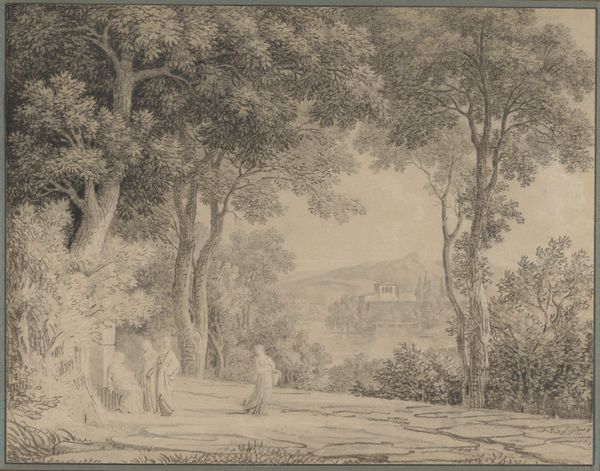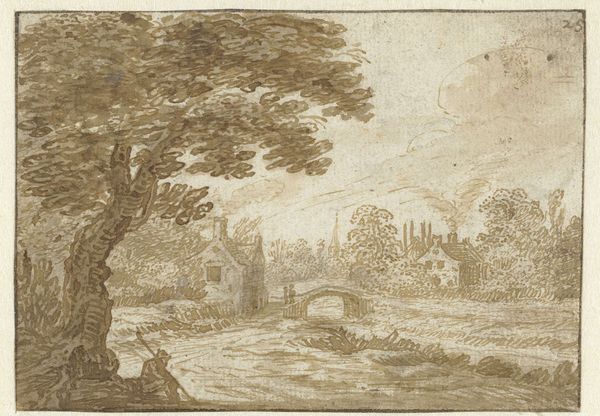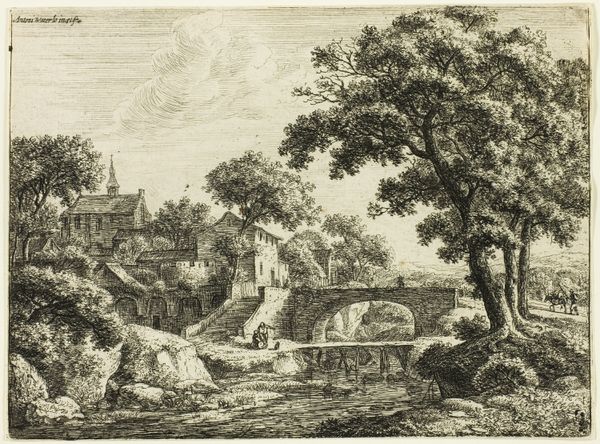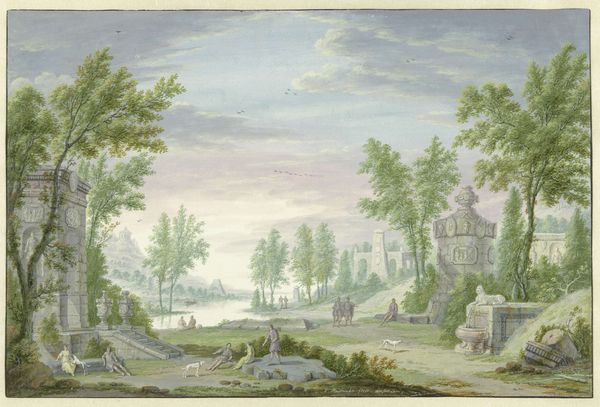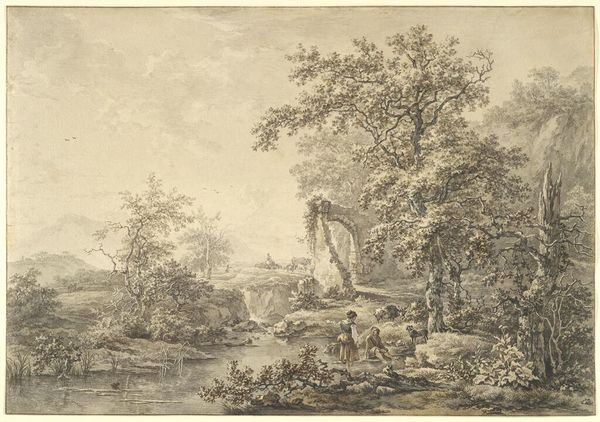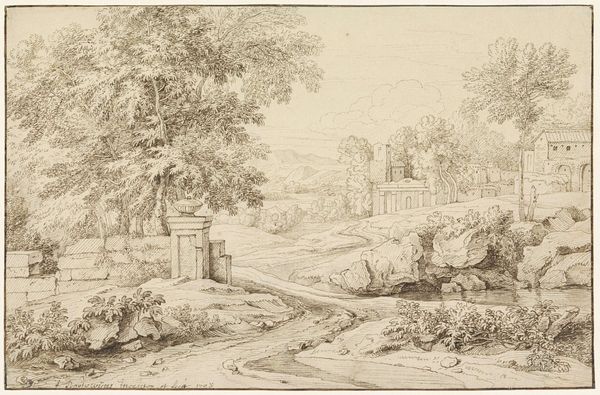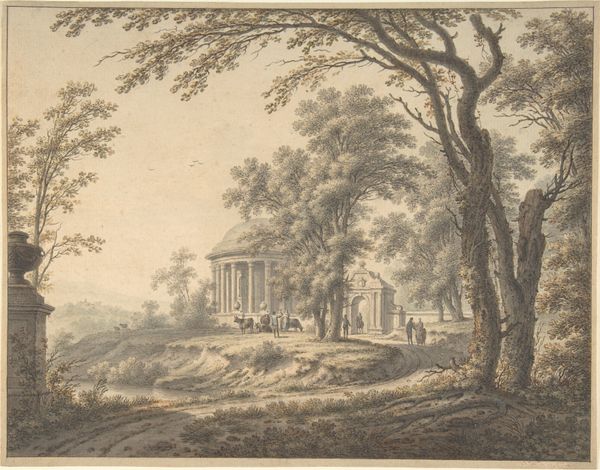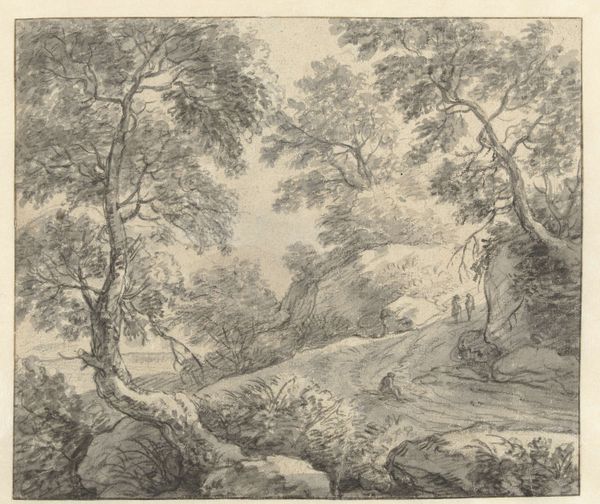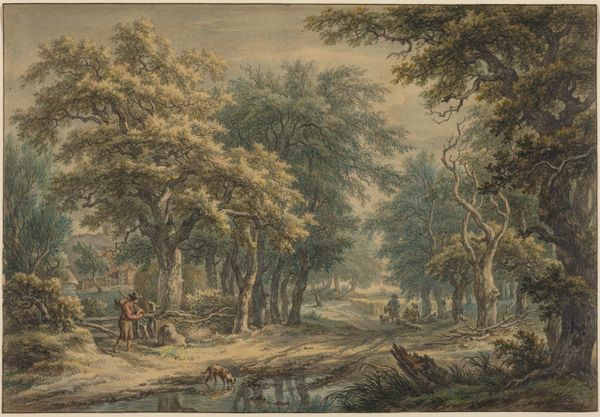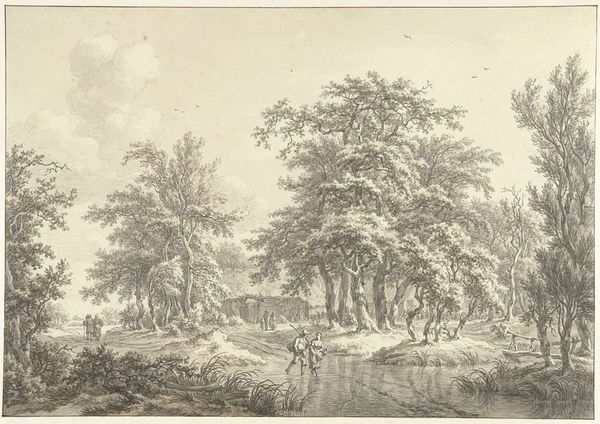
drawing, paper, watercolor
#
drawing
#
neoclassicism
#
pencil sketch
#
landscape
#
figuration
#
paper
#
watercolor
#
coloured pencil
#
pen-ink sketch
#
watercolour bleed
#
watercolour illustration
#
history-painting
#
academic-art
Dimensions: height 282 mm, width 337 mm
Copyright: Rijks Museum: Open Domain
Editor: This delicate drawing, "Arcadian Landscape with a Tomb" by Louis Fabritius Dubourg, done around 1746 with pencil, watercolor and ink on paper, is stunning. The soft blues and greens give it an ethereal quality. How might we understand its place in the art world of its time? Curator: It's tempting to get lost in the idyllic setting, isn’t it? However, placing it within the 18th century tells a larger story. Dubourg positions this "Arcadian Landscape" within the era's obsession with the classical past. Neoclassicism was becoming more and more popular, heavily influenced by new archeological findings. The use of washed colours gives this "history painting" a sense of nostalgia. Editor: That makes sense. It almost feels staged, as if Dubourg is using antiquity to convey something about his present. Curator: Exactly! The political structures and social hierarchies often mirrored those idealized classical states. Aristocratic patrons would hang pieces like these as ways to associate with that perceived golden age. They are, after all, often the only ones who can afford a tomb such as that one, placed at the foreground of this drawing. Would you say it's overtly political or more subtle, relying on shared cultural understanding? Editor: I think the subtlety makes it even more effective. It's less a direct statement and more a reinforcement of the status quo, a display of good taste. Curator: Precisely. And how do museums today alter that original intent by displaying the piece, divorced from its original aristocratic setting? Editor: That's a fascinating point. Now it invites a much wider audience to engage with that same symbolism. A shared history, even though unequal. Curator: And ultimately, to question it. A drawing designed to affirm authority now invites us to reflect on the ever-shifting politics of imagery. Editor: That really gives me a fresh perspective on looking at art! It's about understanding the power dynamics that were at play during its creation and reception, and still affect it today.
Comments
No comments
Be the first to comment and join the conversation on the ultimate creative platform.


